A creamy, nutty, Japanese sesame sauce known as Goma Dare. It’s perfect for dipping pork and veggies in shabu shabu hot pot, drizzling over crisp salads or freshly cooked noodles.
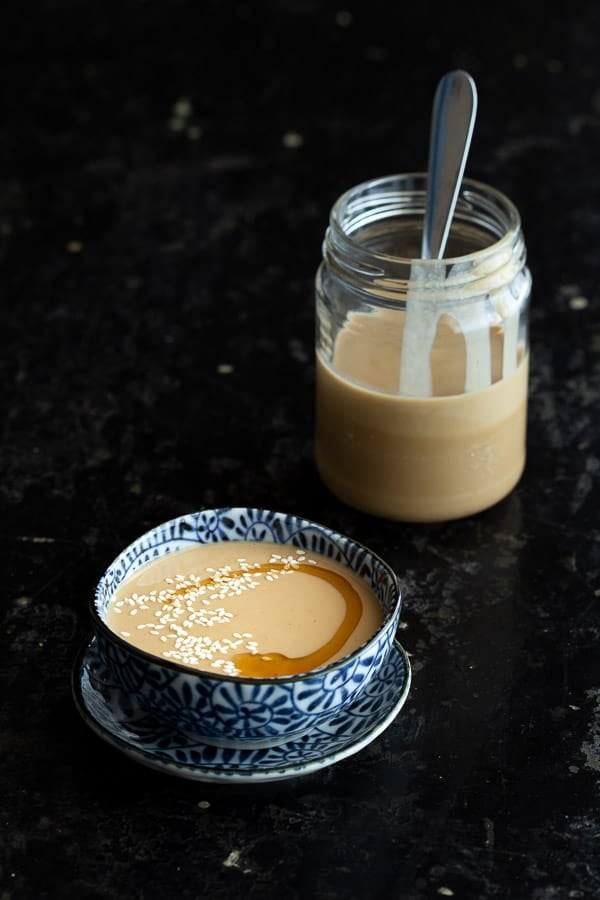
Why We Love This
It feels so satisfying to whip up your favourite dipping sauce in two minutes flat at a moment’s notice. Better yet, you can tweak it til it tastes juuust right – adding a little more tahini for a more intense sesame burst, or soften it out with an extra dash of mirin or mayonnaise for sweetness and creaminess.
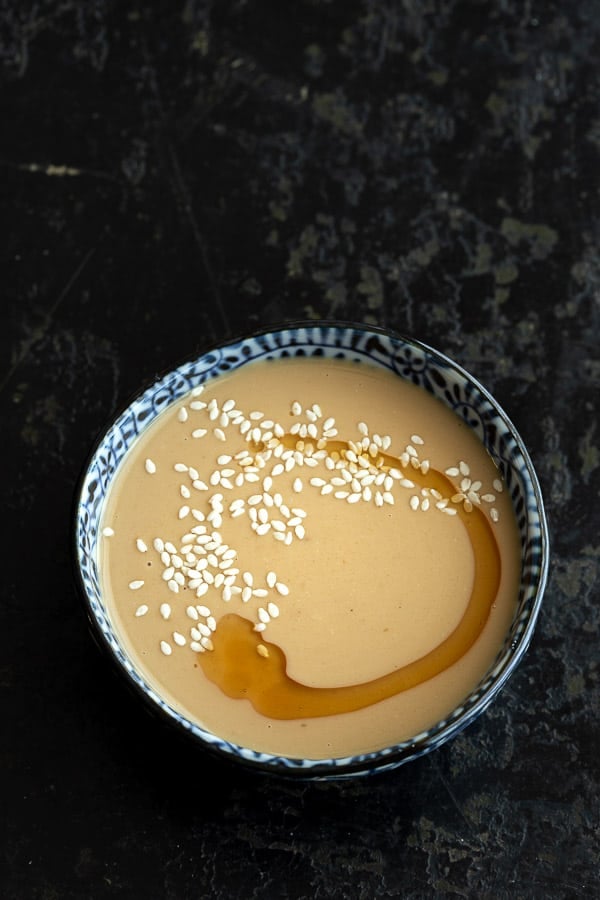
What is Goma Dare?
Goma means sesame in Japanese. Goma dare (pronounced gohma dahreh) is a delicious sesame based dipping sauce which is most known for pairing perfectly with simmered pork and vegetables in shabu shabu (Japanese hot pot). It’s usually served up beside a bowl of ponzu – a citrusy soy sauce which is a complete contrast to the sweet creaminess of sesame sauce.
This sauce used to be made with toasted sesame seeds that were finely ground before being mixed with the other ingredients. However, today we’re sharing a simplified method to make this sesame sauce with tahini. The biggest difference (apart from convenience and time saving!) is in the texture – tahini paste is already perfectly smooth and creamy.
We also added Kewpie mayonnaise for a creamier version, we feel this helps to cut down on the bitterness of the sauce and is a little closer to the sesame sauce you can buy in the supermarket.
What You’ll Need
Apart from tahini and sugar, you’ll need a few key Japanese ingredients for this sesame sauce in your pantry. Staple Japanese condiments such as soy sauce, sesame oil, rice wine vinegar, Kewpie mayonnaise, red miso paste, dashi powder and mirin all come to play in this recipe. You’ll find all these ingredients at Asian supermarkets or online.
Rice Wine Vinegar
Like the name implies, this vinegar is made from rice through fermentation. Unlike regular white vinegar, it’s sweeter and less acidic. The varieties found at Asian supermarkets are usually Chinese or Japanese in origin and are fine to use for this recipe. You can also substitute with apple cider vinegar.
Dashi Powder
We use dashi powder to speed things up, it’s a Japanese stock powder made from fish and seaweed, which is what gives the dish that unique umami flavour you’re looking for.
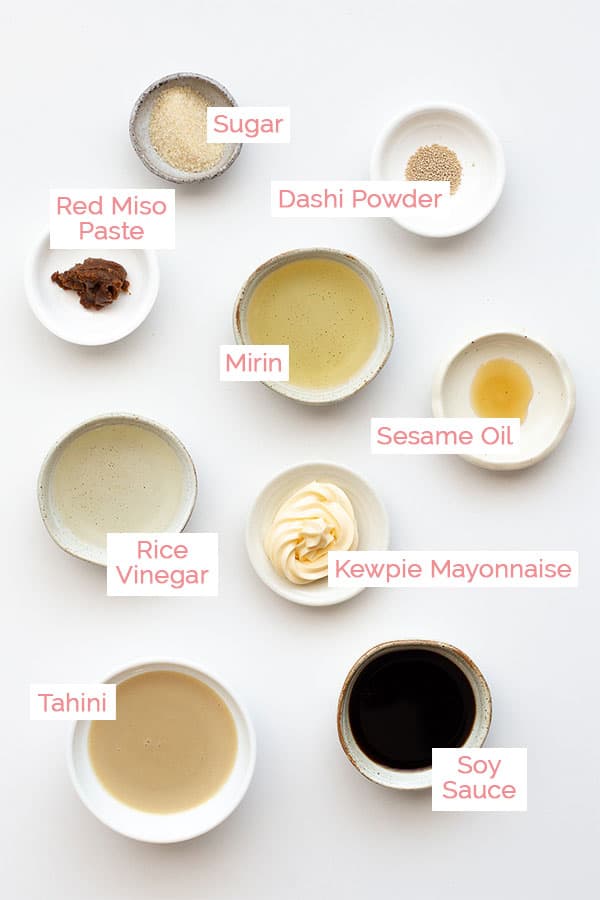
How to make Goma Dare Dipping Sauce:
Add all of the ingredients into a small mixing bowl.
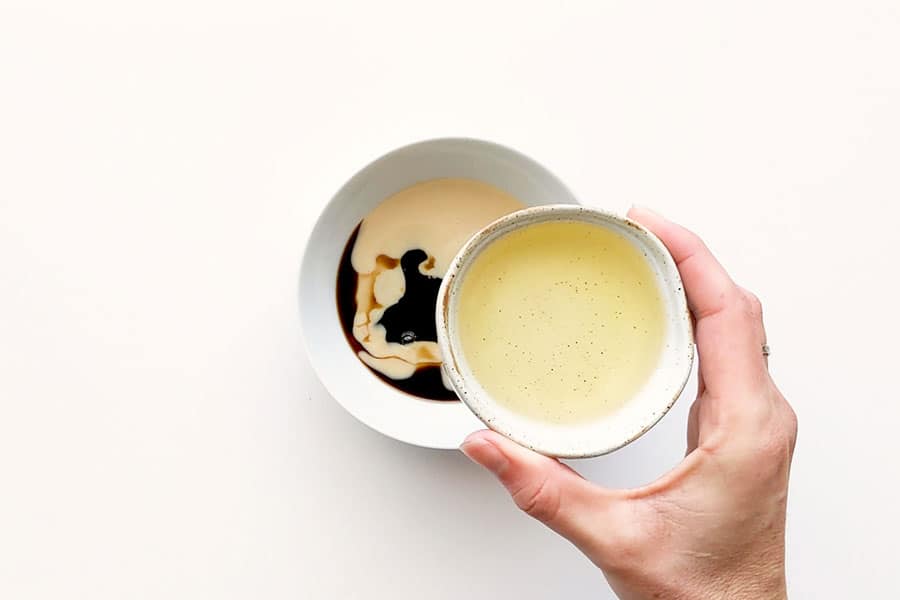
Mix well to make sure everything is evenly blended.
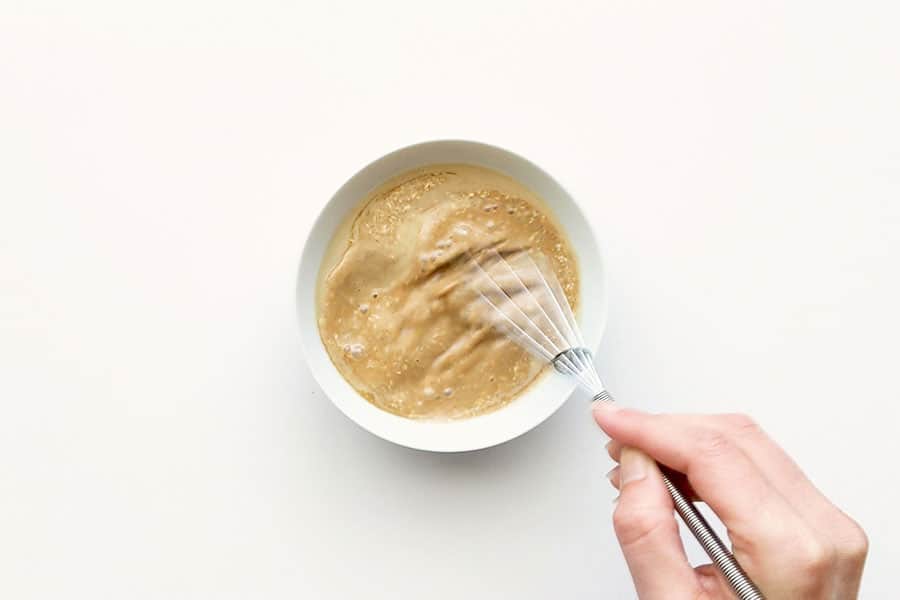
To serve, pour 2 tablespoons of sesame sauce into a small dipping bowl for each person.
Wandercook’s Tips
- Adding mayonnaise makes the sauce slightly thicker and creamier, but you can leave it out if you prefer.
- This sauce can also be used as a dip for raw veggies, drizzled over freshly cooked noodles, or even spread over grilled chicken or Japanese hamburgers for extra flavour.
- To use it as a salad dressing, thin it out a little with extra water or a splash of rice wine vinegar.
- For a beautiful garnish, sprinkle with toasted sesame seeds or gomashio sesame salt and a swirl of sesame oil.
- When serving, add a small dob of minced ginger for extra flavour.
FAQs
This sauce is perfect as a hotpot dipping sauce, but you can also use it as a tasty salad dressing.
To make this sauce gluten free, be careful when selecting your base ingredients. Soy sauce and miso can often have gluten present, and some brands of tahini have gluten added to thicken them up.
This sauce is best stored in a clean glass jar in the fridge. It should keep for a week or so when stored this way, but as with anything, it’s best to check the sauce before using if it’s been in there a while.
Variations & Substitutes
- For a vegan version, use kombu dashi powder and omit the mayonnaise. The sauce will be slightly less thick and creamy but still taste thoroughly delicious! Alternatively, make our naturally vegan sister sauce, roasted sesame dressing, instead!
- If you want to avoid MSG, substitute the dashi powder and add 1 tsp salt instead, also omit the mayonnaise.
- Rice wine vinegar can be substituted with regular vinegar or apple cider vinegar.
- Red miso can be substituted with white miso or left out altogether.
- For an ultra easy version, try Sarah’s creamy sesame dressing instead.
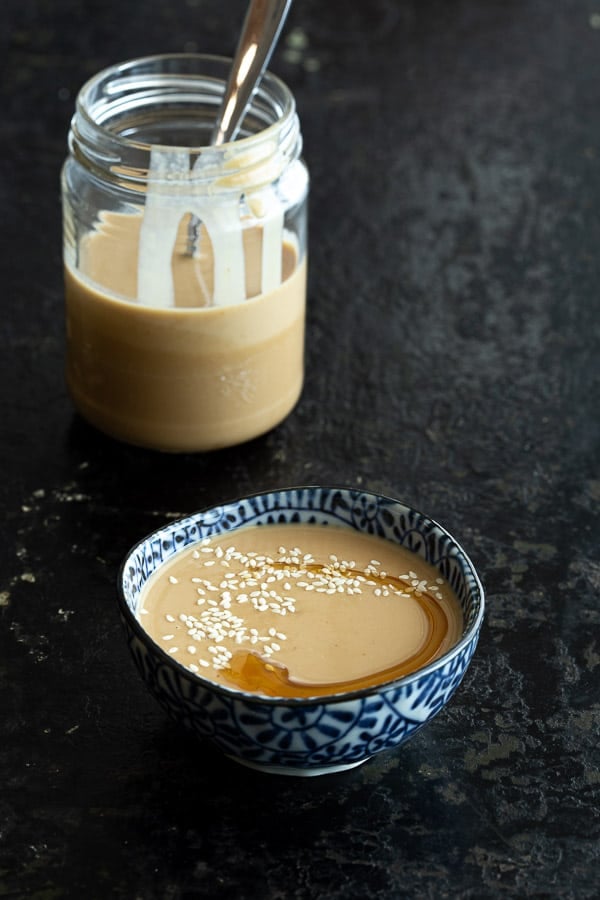
Looking for more Japanese treats? These are some of our favourites:
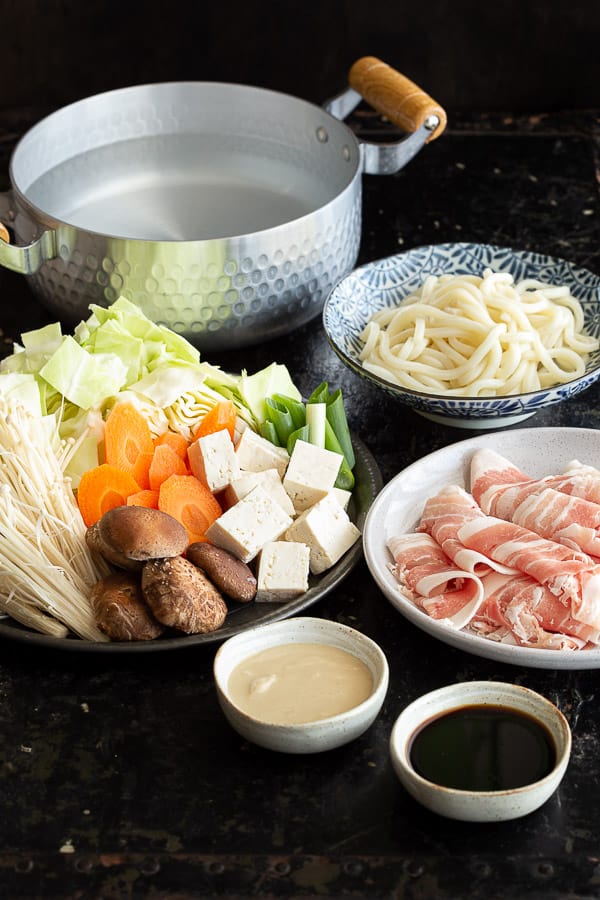
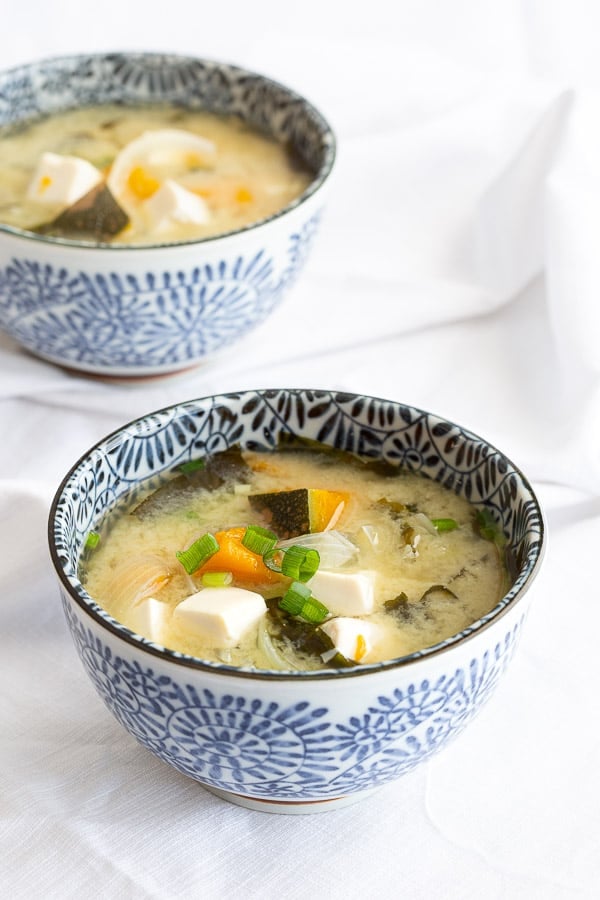
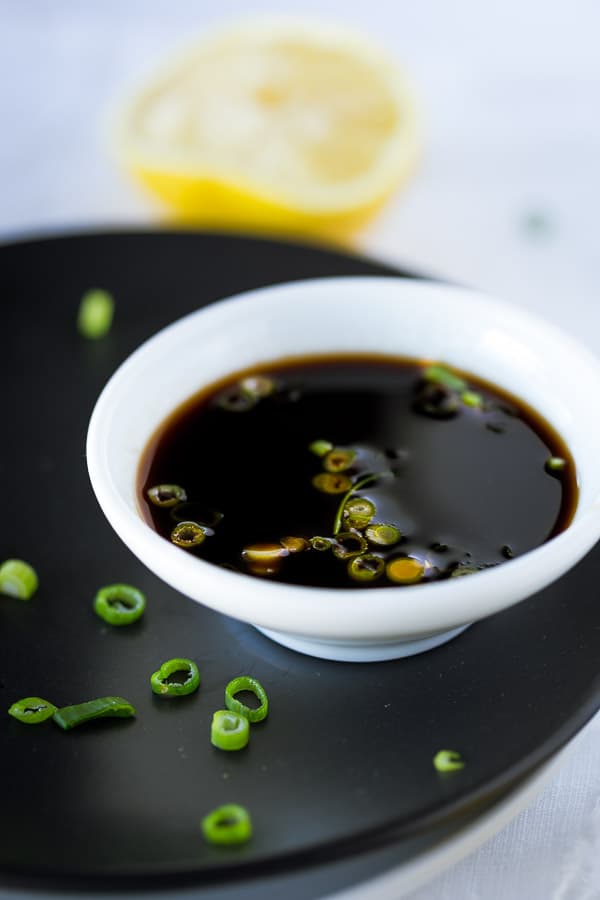
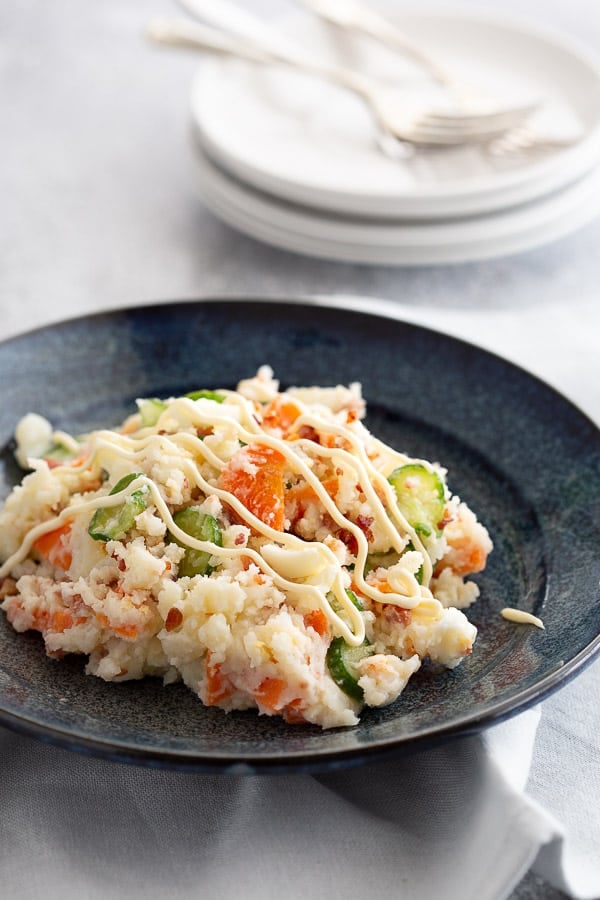
★ Did you make this recipe? Please leave a star rating below!
Ingredients
- 6 tbsp tahini
- 2 tbsp soy sauce
- 2 tbsp mirin
- 2 tbsp rice wine vinegar
- 2 tbsp sugar
- 4 tbsp Kewpie mayonnaise
- 1 tsp red miso paste
- 1/2 tsp dashi powder
- 1/2 tsp sesame oil
Instructions
- Add all of the ingredients (tahini, soy sauce, mirin, rice vinegar, sugar, Kewpie mayonnaise, red miso paste, dashi powder and sesame oil) into a small mixing bowl.6 tbsp tahini, 2 tbsp soy sauce, 2 tbsp mirin, 2 tbsp rice wine vinegar, 2 tbsp sugar, 4 tbsp Kewpie mayonnaise, 1 tsp red miso paste, 1/2 tsp dashi powder, 1/2 tsp sesame oil
- Mix well to make sure everything is evenly blended.
- To serve, pour 2 tablespoons of the goma dare sesame sauce into a small dipping bowl for each person.
Video
Recipe Notes
- Adding mayonnaise makes the sauce slightly thicker and creamier, but you can leave it out if you
prefer. - This sauce can also be used as a dip for raw veggies, drizzled over freshly cooked noodles, or even spread over grilled chicken or Japanese hamburgers for extra flavour.
- To use it as a salad dressing, thin it out a little with extra water or a splash of rice wine vinegar.
- For a beautiful garnish, sprinkle with white or black sesame seeds and a swirl of sesame oil.
- When serving, add a small dob of minced ginger for extra flavour.
- What do you usually eat with goma dare? This sauce is perfect for hot pots, but you can also use it as a tasty salad dressing
- Is sesame sauce gluten free? To make this sauce gluten free, be careful when selecting your base ingredients. Soy sauce and miso can often have gluten present, and some brands of tahini have gluten added to thicken them up.
- How long does sesame sauce last? This sauce is best stored in a clean glass jar in the fridge. It should keep for a week or so when stored this way, but as with anything, it’s best to check the sauce before using if it’s been in there a while.
- For a vegan version, use kombu dashi powder and omit the mayonnaise. The sauce will be slightly less thick and creamy but still taste thoroughly delicious!
- If you want to avoid MSG, substitute the dashi powder and add 1 tsp salt instead, also omit the mayonnaise.
- Rice wine vinegar can be substituted with regular vinegar or apple cider vinegar.
- Red miso can be substituted with white miso or left out altogether.
Nutrition
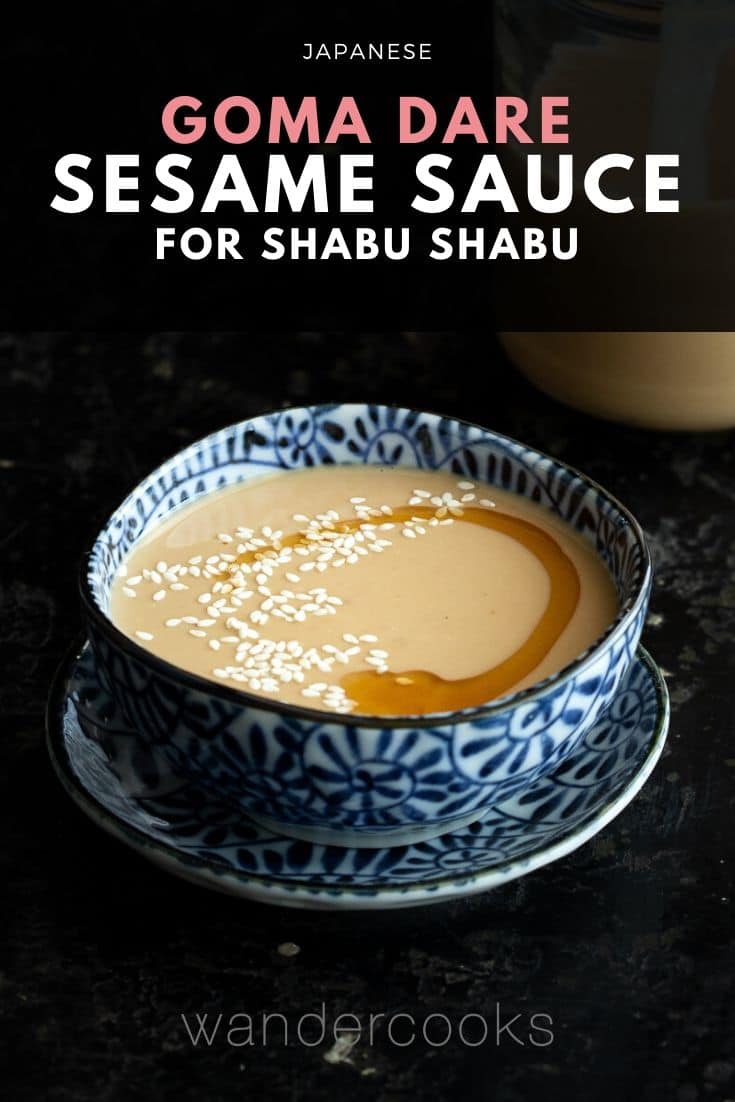

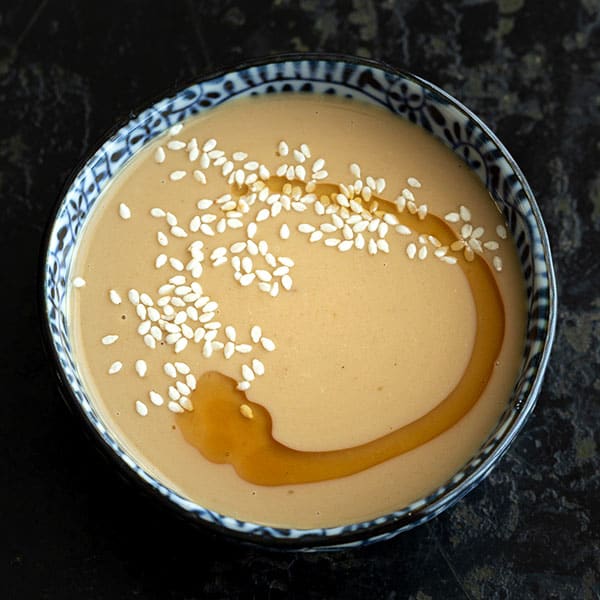


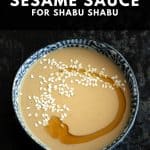
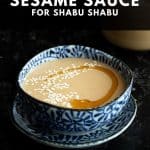
4 Comments
Dyllen Owens
10/12/2020 at 4:46 pmThe mayonnaise is very strong per the ratio. Kewpie has a blooming factor which generally grows as it rues with other flavors. Overall this is a very delicious recipe and is now in my rotation for hot pot dips!
Wandercooks
11/12/2020 at 1:51 pmAwesome Dyllen, glad you enjoyed it. We do go quite heavy on the Kewpie – we love the creamyness it adds, but feel free to tweak to suit your tastes and cut back on this if you prefer.
Happy dipping! 😀
Kathryn
13/07/2020 at 4:58 pmI make something similar based on what I like to have with my hotpot in China: tahini, sesame oil, rice vinegar, soy sauce, minced garlic and ginger, chives (& maybe some chilli, depending on whether I have a Chonqing style hotpot already or not)
Wandercooks
14/07/2020 at 10:09 amOh that sounds fabulous! Now that you mention it, I did try a similar dipping sauce at at Chinese hotpot restaurant here for spicy mala tang which is similar to Chonqing style hot pot I think. So delicious! I’ll try adding the chilli kick next time too. 🙂